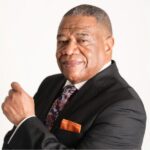By: Rachel Zemach
When you return to school in the Fall, chances are good that a Deaf or hard of hearing (DHH) student will be part of the mix. Most DHH students attend regular classes in their local public schools. Whether or not this is good for the students varies greatly. In both education and language acquisition, Deaf students lag behind their peers. There are major problems in this important field, albeit easily solvable ones.
What Can You Do?
Learn about these students’ unique circumstances, scrutinize the status quo in your school carefully, seek information from Deaf adults and Deaf organizations, and implement their methods in your own school.
An Overview
Worldwide, only 2% of all Deaf children have access to education via sign language. 90% of parents of DHH kids are themselves hearing; having a deaf child is new to them. In the US, 85% of Deaf and hard of hearing (DHH) students are mainstreamed into regular classes and schools, where they are often the only deaf students on campus. Mainstreaming, outfitting students with hearing aids or cochlear implants, and educating them with hearing peers is based on good intentions and an effort to comply with ADA laws.
But is it working?
Deaf students often score the lowest of any minority group academically. 70% fail to meet basic language milestones expected of their age since their parents do not sign. Language deprivation and reduced brain development are rampant due to insufficient language input in the early years. Reading and writing levels are notoriously low, although the reasons for this are often misunderstood. There are challenges with mental health and, later, finding employment. Small wonder that a recent article has the words “Stolen Futures” in its title.
Where is This Stolen Future Occurring? Often, in Your Neighborhood Public School
Some mainstreamed students attend self-contained Deaf classes, and some attend regular classes for all or part of the day. Some have an interpreter, and some use FM systems (a tiny mic the teacher wears) or captioning devices. Many have none of the above and fall through the cracks.
Another common level of support is “itinerant teachers.” They see students for a half hour per week.
Across the board, staff varies greatly regarding how qualified they are.
8-10% students attend free, state-run Deaf schools. Most states have one or two, often K-12. Many are residential. There, all students, staff and administration are Deaf.
Deaf schools celebrate Deaf culture and American sign language (ASL), while mainstream schools often avoid them. Many of the general education teachers whom I taught were dedicated teachers and truly wanted to understand how to do the best when they had a deaf student placed in their class; they simply were not given the information they needed to do so.
Assumed Best Practices
Administrators in public schools usually don’t have Deaf education training, so they lack an understanding of the very distinct characteristics and learning styles of DHH students, whose disability is uniquely related to communication. Understandably, they apply their own values to their work, rationalizing, “It’s a hearing world.”
SEE signs (Signed Exact English; a sound-based and rather stilted replica of English on the hands) are used in most mainstream programs. So is Sim-Com. Attempting to use two separate languages simultaneously, Sim-Com vastly undercuts the power of ASL.
“The startling fact is that Deaf people and professionals disagree.” —Harlan Lane.
Most Deaf adults feel that it is best to have Deaf peers, fluent communication via American sign language (ASL) at home and at school, a proud Deaf identity, and also getting speech therapy/hearing devices (if appropriate and desired by the child). But Deaf input in public schools is minimal.
In a Public School Environment, What CAN be Done? Where do You Come In?
Direct instruction is incredibly effective; hire Deaf teachers. Teach ASL to all staff and all students. There is literally no down side to this, and tons of benefits. Abundant signing on campus is true inclusion.
If an interpreter is absent, immediately tell the office to get a replacement. Do not force students to use hearing devices; respect them and ask them what works best. Listening fatigue is real.
Get outside help from Deaf schools, organizations and Deaf professionals. Read their opinions and advice on social media. Seek their advice on fair testing techniques and appropriate Deaf-centered curriculum. Encourage parents to check out the wealth of resources the Deaf community has to offer their children rather than encouraging surdophobia (the fear of deaf people.)
There are Deaf camps that welcome all DHH kids in the summer, and their impact is often life-changing. There are deaf events, Deaf influencers, actors, authors, and a YouTube and TikTok presence. ASL can be learned online or in community colleges.
My book, The Butterfly Cage, brings all the above topics to life, as seen in my 13-year teaching career, and you could do worse than to read it over the summer.
Be very careful of accepting the majority opinion or advice; just as the earth was found not to be flat, the sad truth is that the majority opinion has not proved correct in its approach to deaf education. Be an outlier; collaborate with genuine experts who live the life daily, deaf professionals. Seek their professional knowledge and heartfelt expertise.
This way, you will not only do no harm but also plant seeds of success, beauty and wisdom on your campus, which will take root and positively impact everyone long into the future.
Bio: Zemach is Deaf and taught at a mainstream school for ten years. She has published articles in HuffPost, USA Today, and many other venues and wrote a memoir about her teaching experiences: The Butterfly Cage. She lives in North California.
Published by: Khy Talara


















